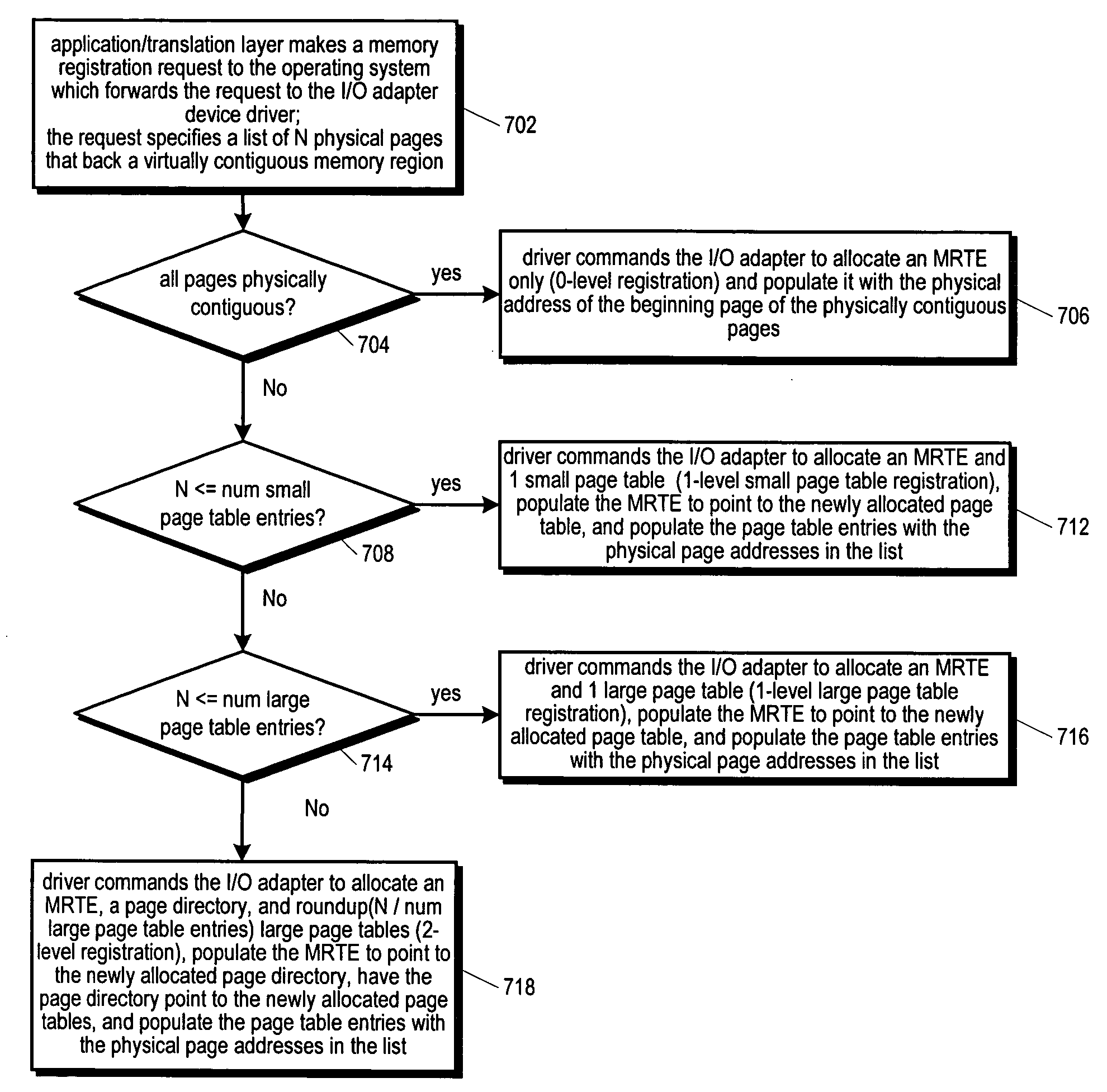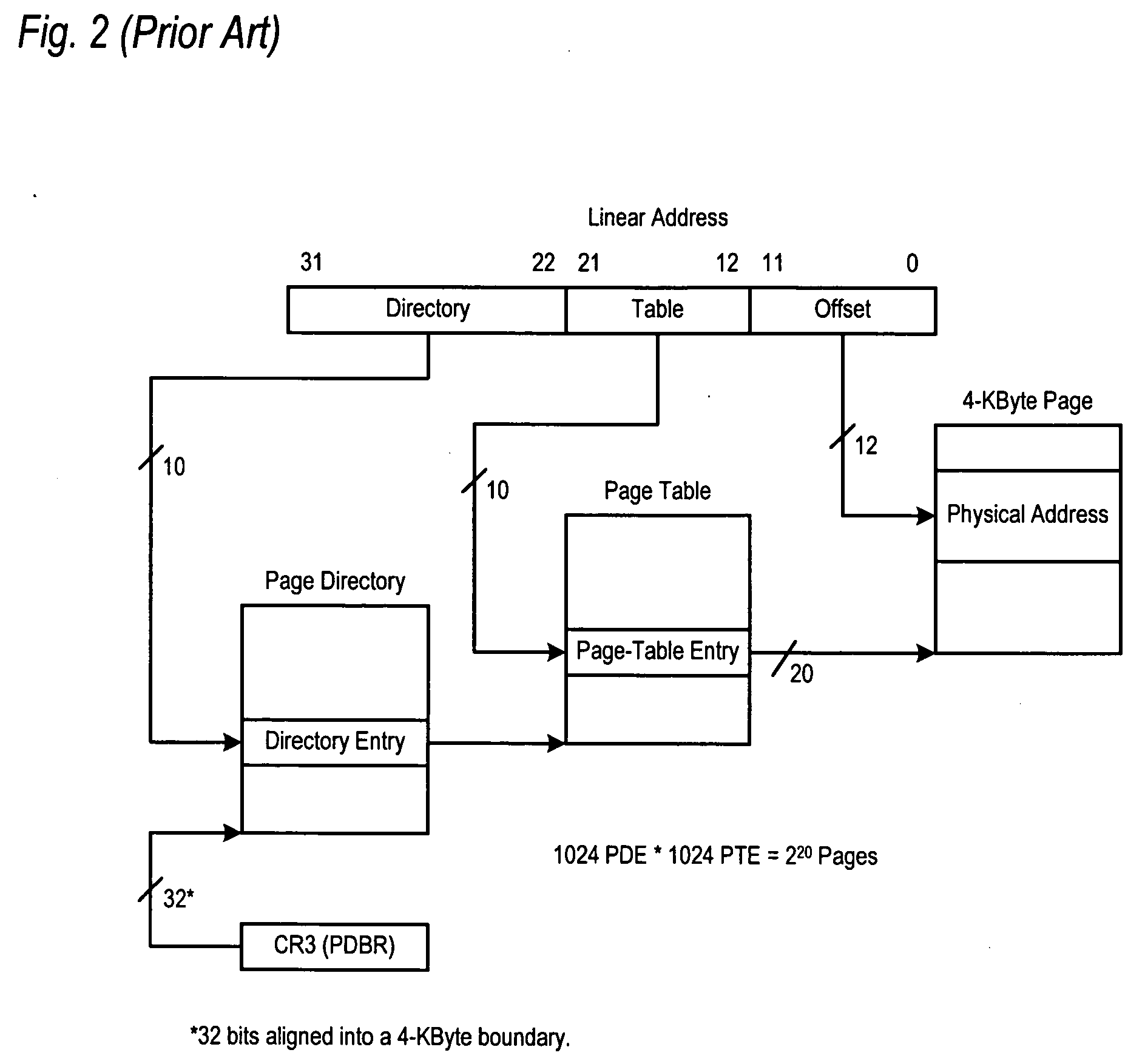RDMA enabled I/O adapter performing efficient memory management
a technology of i/o adapters and memory management, applied in the field of i/o adapters, can solve the problems of imposing undue pressure on the host memory in terms of memory bandwidth and latency, limited network transmission, and inefficiency typically not, and achieves the effect of small number of levels and reduced amount of i/o adapter memory required to store translation information
- Summary
- Abstract
- Description
- Claims
- Application Information
AI Technical Summary
Benefits of technology
Problems solved by technology
Method used
Image
Examples
Embodiment Construction
[0048] Referring now to FIG. 3, a block diagram illustrating a computer system 300 according to the present invention is shown. The system 300 includes a host computer CPU complex 302 coupled to a host memory 304 via a memory bus 364, and an RDMA enabled I / O adapter 306 via a local bus 354, such as a PCI bus. The CPU complex 302 includes a CPU, or processor, including but not limited to, an IA-32 architecture processor, which fetches and executes program instructions and data stored in the host memory 304. The CPU complex 302 executes an operating system 362, a device driver 318 to control the I / O adapter 306, and application programs 358 that also directly request the I / O adapter 306 to perform RDMA operations. The CPU complex 302 includes a memory management unit (MMU) for managing the host memory 304, including enforcing memory access protection and performing virtual to physical address translation. The CPU complex 302 also includes a memory controller for controlling the host m...
PUM
 Login to View More
Login to View More Abstract
Description
Claims
Application Information
 Login to View More
Login to View More - R&D
- Intellectual Property
- Life Sciences
- Materials
- Tech Scout
- Unparalleled Data Quality
- Higher Quality Content
- 60% Fewer Hallucinations
Browse by: Latest US Patents, China's latest patents, Technical Efficacy Thesaurus, Application Domain, Technology Topic, Popular Technical Reports.
© 2025 PatSnap. All rights reserved.Legal|Privacy policy|Modern Slavery Act Transparency Statement|Sitemap|About US| Contact US: help@patsnap.com



